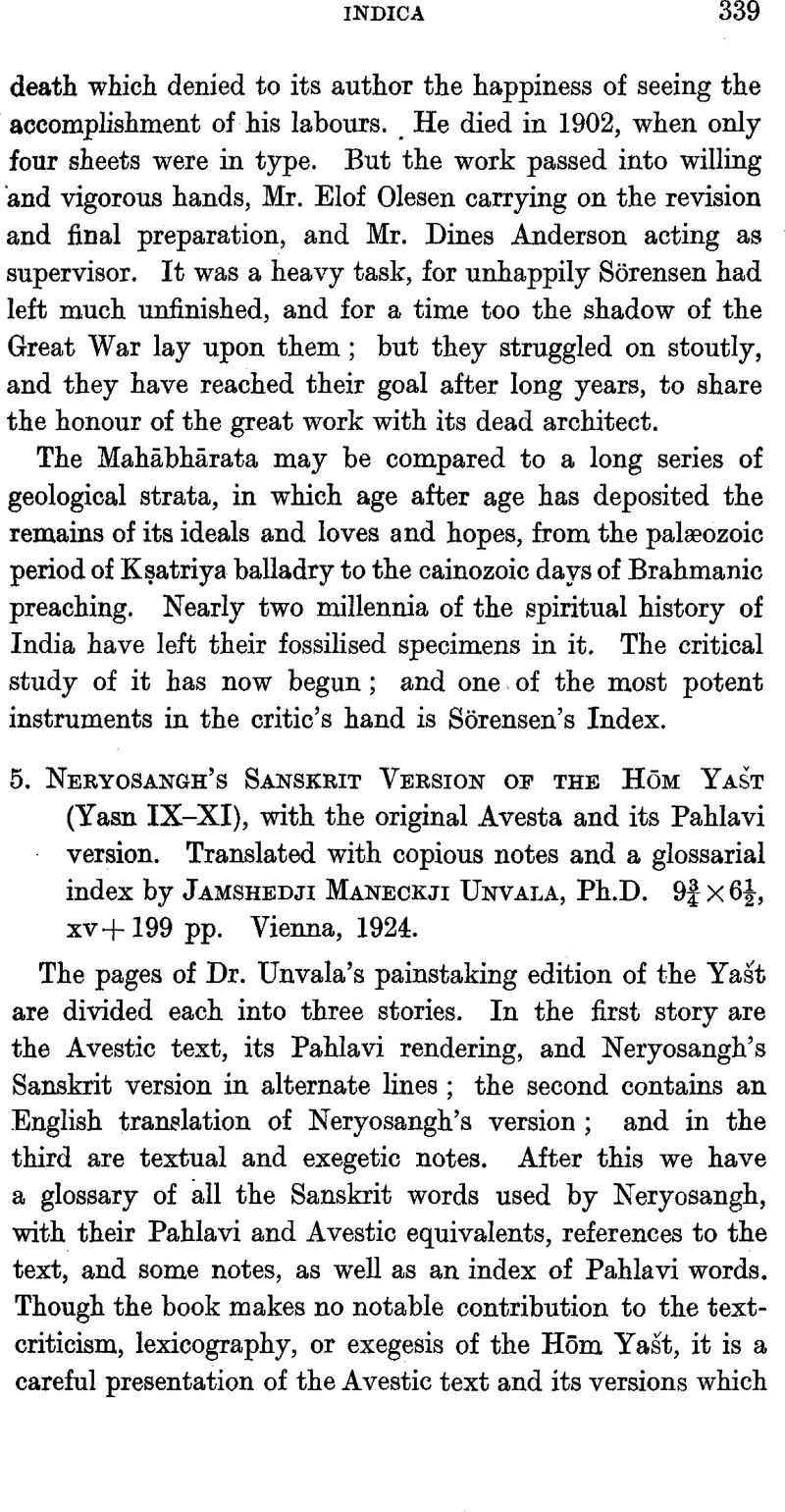No CrossRef data available.
Published online by Cambridge University Press: 15 March 2011

1 An instance is ix, 18, 61, where P. simply renders kavay-and karapan by their Pahlavi derivatives, but N. turns them into adarśaka aśrōtṛ.
2 An example is yōti (ix, 5, 19), which is not connected with yutaka, as Dr. Unvala states, but is vernacular jōti < Skt. yōktrī : cf. Bengali jōt from Skt. yōktra. Sammārjavān (ix, 1, 3 = p. 181) is impossible as a Skt. perf. part, from mṛj, which Dr. Unvala supposes it to be : as the Pahlavi here has šnāxt, “recognized,” I suspect that N. concocted his sammārjavān from Guj. samajavῠ, on the basis of a false etymology.
3 Thus kṣamā-para (pp. 55, 124) is not the comparative of an adj. kṣamāpa, but a compound, meaning “addicted to forbearance”. Vēśmani (ix, 7, 24 = p. 99) cannot be nom. plur. unless we alter the text to vēśmāni.